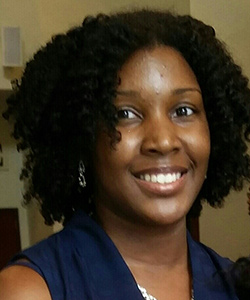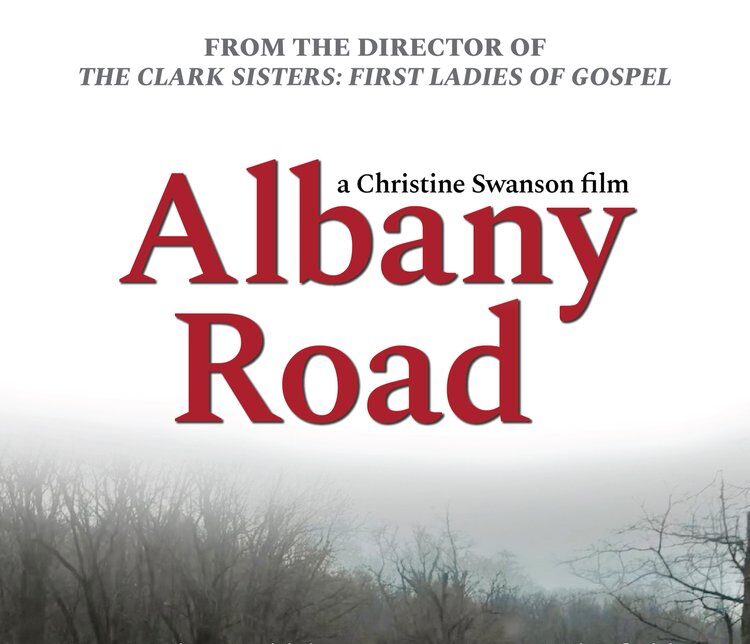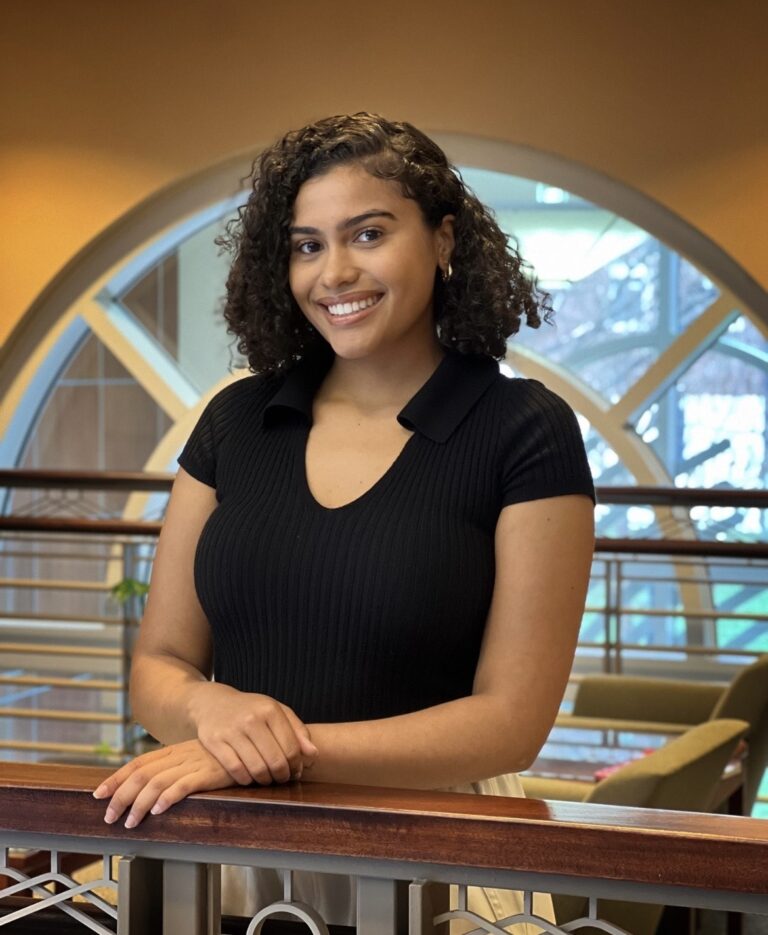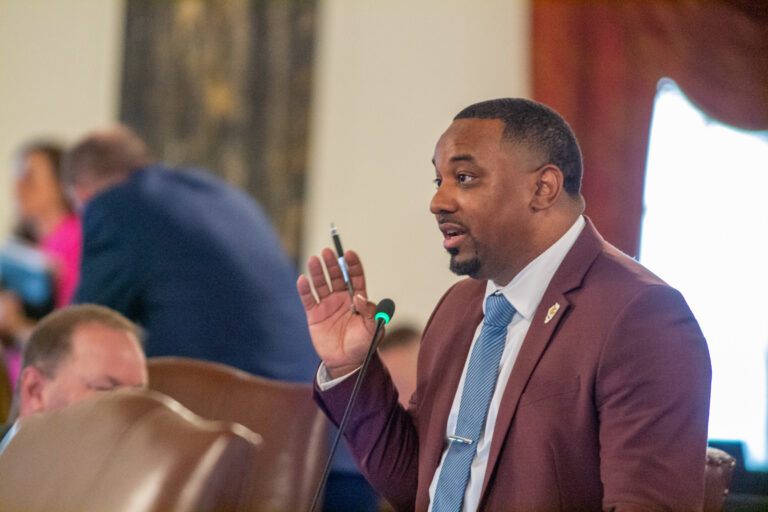With police brutality in the news, parents may be wondering how to talk to their children about racism and White supremacy. These conversations are familiar to Black families, but University of Illinois Professors Shardé Smith and Helen Neville say all families should be having them.
Illinois Newsroom education reporter Lee Gaines recently spoke with Smith, an assistant professor of human development and family studies, and Neville, a professor of educational psychology and African American studies, about best practices for both parents and educators.
This interview has been lightly edited and condensed for clarity. You can find links to anti-racist educational resources below the interview.
Lee Gaines: Conversations about race and the police are something that Black parents have had to have with their children for a very long time. I want to acknowledge that reality first. What are some of the best practices — from an educational and trauma-informed standpoint — that Black families use to talk to their kids about race and also police brutality.

Dr. Sharde Smith: In our scholarly work, we refer to these messages as racial socialization, and these racial socialization practices are the messages that families send to their children about race and how to navigate a racialized society. Some refer to it as ‘the talk,’ but in addition to what is verbally communicated, families also socialize their children indirectly such as modeling their own behaviors and emotions when they do experience any type of trauma.
Black families use a combination of strategies to help children talk about race. Some of these practices include sending racial pride messages that foster a positive racial identity, teaching kids about their cultural traditions and holidays, possessing and reading books or watching movies about Black history and general topic books and movies that depict Black characters in a positive, non-stereotypical way. When communicating these types of messages, it builds up their self worth and fosters a sense of belonging, which can help youth process dehumanizing exclusionary racial events. One other approach that black families use is preparing youth for racial bias. And this is a practice that Black families use to let kids know that they may be treated differently because of the color of their skin. Families often accompany these messages with ways to cope or navigate this event. And these messages can include keeping your hands at 10 and two if you’re ever pulled over by the police, or do not under any circumstance reach for your glove compartment before receiving permission. And even when you do receive that permission, do it slowly. So these types of messages can also include positive coping strategies to utilize. But when we’re preparing kids for bias like this, we’re equipping them with the tools (they need) to hopefully navigate these racial encounters successfully.
LG: Dr. Neville, what have you witnessed, or what strategies have you heard Black families using that are successful?
Dr. Helen Neville: When we think about parents providing racial socialization messages to their youth, for them to have also explored their own socialization process. And so parents provide messages, not in a vacuum, but based on their own histories. So the first thing that I would also encourage parents to do is to begin to explore their own experiences with racism, potential trauma around that, how they dealt with that, how they currently feel about these experiences, and to get some support around that. And by doing that, they can be fully present for their kids as they help them navigate the difficult terrain of anti-Blackness and racism in this society.
Black families, in particular, are tasked with the idea of: how is it that we raise a child who can thrive in this environment that at times dehumanizes them? And one thing is to really focus on the individual aspect of the child, their strengths, their personality — to cultivate that piece. And, at the same time, to provide these other racial socialization messages that Dr. Smith has identified that deal with instilling a sense of cultural, racial, ethnic and cultural pride, preparing them for any potential bias that might happen in the future.
LG: Dr. Smith, is there an age at which parents should start having these conversations with their children? And I’m including all parents in this question — not just Black families. And how do you make these conversations age appropriate?
SS: Parents should start having these conversations really early. And not even just having racial conversations, but modeling appropriate racial coping strategies. We know that children as young as three years old can recognize and develop racial attitudes and biases. At an earlier age, you may focus on some of those cultural socialization messages, such as exposing children to books with appropriate cultural representation and instilling these positive racial messages and engaging children in culturally diverse activities. And then as they get older, you may add in, particularly for Black children, some of these preparations for bias messages and begin to have a dialogue about the meaning of race and society, and to make sure that you’re open to answering any questions that they may have.
Many times it is the Black families that have been doing these types of parenting approaches, but this can be for non-Black families as well — and it should be because they’re also living in this society. And when (youth) are learning how to call out or recognize injustices or racial practices from their parents, they will be equipped to engage in anti-racist approaches as they get older. These conversations will become more complex over time. But when parents convey that they are open to having these difficult conversations, their kids are going to be more likely to disclose their experiences and feelings to them.
And I will say that parents know their children best. And so they’ll be able to feel out when is an appropriate time, but we have to keep in mind that children are going to learn about this one way or another. What and how they learn can be shaped by parents in a supportive family environment, and so starting earlier will be best because they’ll face that reality one day soon.
LG: I’ve heard the ability to talk about race described as a muscle, and it’s something that Black families and some non-Black families of color are used to. But a lot of White families might not be having conversations with their children, so it’s like a muscle that hasn’t been exercised at all. I’m wondering, Dr. Neville, what’s your advice for White parents and perhaps non-Black parents of color who haven’t ever had these conversations with their children, but they want to start?

HN: In the United States, one of the common racial beliefs or ideas out there is this notion that we live in a colorblind society in which race and racism really don’t structure people’s lived experiences. And so the first thing is that folks need to begin to educate themselves about the role of race and racism, and how it operates throughout history, and operates in our daily lives. There’s two kinds of approaches to colorblind racial beliefs. One is where people want to just say, ‘Oh, I don’t notice what race you are.. You know, we’re all the same.’ And that could be called a color evasion approach. The reality is that we live in a society that does see that and we live in a racially hierarchical society in which race has consequences on people’s incomes, education levels, on people’s lived experiences. And so even if you deny or don’t think about race — it still plays a role. And the other kind of racial colorblindness is this idea of not noticing or seeing racism. So the idea you could see and hear about the horrific murder of George Floyd and say, ‘oh, race didn’t have anything to do with it.’ What that does is it ends up perpetuating inequalities in our society.
When we adopt these racial blind beliefs, they actually don’t help us in moving our society forward in terms of promoting racial equity, but in fact serve to actually reinforce that inequity. And that’s why a lot of people talk about this notion of your silence is actually a part of the violence, because you’re not naming this. So within all of this context, one of the things that is important is that people begin to educate themselves about the history and experiences of Black folks, about the history of White Supremacy — which I know that term really makes people uncomfortable— what White Supremacy in this society means and to begin to look at that.
The good news is there’s lots of available resources that people can take a look at. (Resources provided below.) Parents need to begin to get on their journey, educating themselves about race, racial oppression and anti-Blackness in our society. They have to realize that if they don’t speak about these issues, and they’re silent on the issues, they are still socializing their child about race. What they’re telling them is that it’s okay not to think about race, and that the dominant racial messages that children are receiving on TV, and newspaper ads, by their friends are correct. Not talking to your child could actually be harmful and perpetuate racial inequalities.
The next thing is: begin to monitor their own comfort level and emotions. When we begin to read and learn about this information, it might counter some of the ways in which White people have been socialized, and people will have emotional responses to that — anger, sadness, guilt. Begin to process that with friends, family members, but not to overburden people of color with that processing. I think that gets folks ready to have these open conversations in which they can be fully present for their children. It’s important for people to know that they don’t need to know everything, that they can be open with their child and say, ‘I’m just beginning to explore this myself, but let’s have a conversation.’ This allows children to know that they can have difficult conversations in the home, and that race is not a taboo topic.
They could also do some check-ins with their children to see what they have been exposed to. That provides some opportunity to correct misperceptions in the messages that they’ve been given. It also will allow the parents to explore the child’s emotional feelings. They can then also model empathy for targets of racism, whether it’s at school or something that they hear in public. And then I would also encourage White parents and non-Black parents of color to also begin the exploration of race and ethnicity and what that means in their own family, and begin to read books about whiteness and their ethnic heritage.
LG: I think it’s also important to note that parents and guardians aren’t the only adults in their children’s lives. We also have teachers. Dr. Smith, what can teachers — I’m thinking specifically, teachers and educators of young children — do when they’re asked questions about racism and police brutality?
SS: Teachers have a huge role in socializing the children that they teach and interact with on a daily basis. So when teachers are asked questions about racism and police brutality, they can first and foremost, acknowledge their question. Engage the child’s current awareness of racism and police brutality. You can say things like, ‘thank you for asking me that question. I want to answer you, but first, I want to know more about what you know.’ And teachers can then acknowledge what kids know and validate their feelings, their thought process, in order to answer their questions in an age appropriate way and provide additional developmentally appropriate resources that can help them grasp these complicated issues.
I think when teachers shy away from or put it off on to parents — they’re sending a signal that this is not something that we talk about at school or this is something that’s outside of this realm. We know that racism and and perhaps police brutality in different forms… is present in (the school). By sending them away and not addressing it, or not helping them work through that, they’re sending a message that this does not belong here and this is not a conversation that we should have here when in fact it does.
LG: Dr. Neville, do you have anything to add? How should high school teachers or even college professors address this?
HN: Sometimes what happens is that teachers rely on the Black students or the other students of color in the classroom to speak up on these issues. And so the idea is that the teacher would not look to these students to educate other students. The second issue is that these discussions of race, racism and police brutality are emotional conversations that come up in the classroom and can sometimes go sideways — in ways that you’ve never expected. When you shy away from having those difficult conversations, that can actually do more harm, particularly to Black students and other students of color in the classroom. Teachers can continue to gain skills on how to have these courageous conversations so that they’re not doing harm to students of color, and then also to learn skills to call out racism or microaggressions that could actually happen in the classroom that then can further harm students of color where they feel silenced, invalidated, and not understood.
LG: When news about police brutality breaks now, there’s often a cellphone video involved and it’s frequently quite traumatic. I’m thinking specifically of the video of George Floyd’s murder in Minneapolis. What about parents who might be asked questions about this video, or who notice that their children are struggling because they’ve seen it? What advice do you have for them in terms of seeking resources for their children to help them cope? And then also perhaps seeking resources for themselves because they, too, might be struggling after watching videos like that?
SS: I do think a way that parents can help their children, especially if they have not even seen the video, is to initiate and provide space for that conversation asking ‘how are you feeling about what is happening right now?’ Parents can go at their child’s pace and let the child set the tone of the conversation, providing space for them to process these traumatic events, to ask questions, express their emotions and to have an open dialogue about the realities of race in our society. And also be patient with children because if they don’t want to discuss it anymore, if it does become overwhelming, then be okay with closing the conversation for now and just reiterating that I’m here for you if you want to talk. And parents can just continue to reassure children that they’re loved and supported, and that these topics are difficult. And so having them in a warm and supportive environment is very important. Sometimes it’s difficult to even name those emotions and know what it is. And sometimes you can’t even say what it is, and you may just cry or let it out in different ways. Provide resources for children to be able to let that out. It can even be through art and dancing or reading or taking a walk and doing some physical activities.
And that may be difficult for parents who are also struggling themselves. And so it’d be important for parents to also make sure that they’re taking care of themselves and reaching out to those who can listen and help them process and give them the space to be able to name their emotions or express their emotions. I would just like to state though, that one thing about the experience of racial discrimination and racism that happens in the black communities — we often lean on each other and we are being both supporters but also grievers at the same time. It can be very taxing on us, and so having multiple people that you can go to and checking in on them would be very helpful. And recognize that sometimes people are also grieving and they need the space to be able to go through those emotions and then hopefully they can then come back and process them.
One more thing: even if children don’t see the traumatizing videos, are not even aware, that they even exist — particularly among younger kids — they’re still impacted by the emotional, psychological and the physical pain that parents are experiencing. Racial stress has this way of impacting those who are in close relationships. And in this case, parents could be emotionally unavailable to their children in ways that children cannot understand. Kids may be struggling indirectly through their parents’ struggle. Recognizing this transmission of race related stress that often goes through families and their close networks, and just being able to find the space and a time and the ability to be able to process a lot of this can be very difficult for those in these spaces.
LG: Dr. Neville, is it then important for folks to care for themselves in addition to also caring for their children?
HN: The answer is yes. Dr. Smith’s research talks about the importance of parents’ own experiences; we need to watch out for our own trauma and potential trauma responses first. I’m reminded of when you’re on an airplane that you have to put on the oxygen mask first before you’re able to put on the mask for a child or someone who’s not able to. I think the same applies in this situation. And so parents need to understand what might be trauma responses. These trauma responses are just common, normal, emotional reactions to what we’re seeing on the TV, and it might be crying for no reason, feeling increased anxiety, feeling low, feeling exhausted, being tired, not being able to eat, having a hard time falling asleep, feeling fatigue.
So we need to begin by asking what can I do to take care of myself first, so that I can be fully present for my child. And that might be making sure you get extra rest, making sure you are able to eat properly and build social connections with other folks.
LG: Dr. Smith, is race and police brutality specifically something that families should continue to talk to their children about as they grow up?
SS: Yes, most definitely. Families should continue to have these conversations, continue to engage in these socialization practices and strategies to educate themselves — and take care of themselves in the process. Check in and be aware of one’s place in society as they navigate these day to day things. And these conversations will shift over time and families will be instilling the tools that are necessary for children to learn about their history or the current state of society or know where they want to be to navigate racial experiences, to cope with these things and to combat racial injustice in their day to day lives. I don’t think this work stops at all. The conversations may look different, they may manifest at different times.
But I would just like to say that a lot of these conversations must happen in a warm and supportive environment. And so just being present and available to your child provides an opportunity for them to come to you in the event that they would like to discuss any difficult issues, and they’ll be more likely to come to you under those circumstances.
LG: Dr. Neville, how do these conversations evolve as children grow into teenagers and adults?
HN: Developmentally, they’re able to think about more complex systems. And so they are able to get to the nuances of things like structural racism, whereas young kids don’t understand those levels of complexity. And so one of the things that Dr. Smith said that I think it is important is to do these check-ins with our youth, young adults and adults. ‘How are you doing? You doing okay? How are you making sense of the killing of George Floyd? What are you doing to take care of yourself?’ I think we can do a lot of that to promote a conversation that involves an aspect of healing. It’s also the notion of listening, providing space for our children no matter what age to say what they’re thinking, what they’re hearing and what’s making sense, and to use this opportunity to be on the lookout for internalized racism. That would be negative messages that actually blame Black people for their experiences. And so we can provide opportunities to actually correct those misperceptions, because we know they internalize too many of these negative messages about Black folks, and that’s going to have a negative consequence. The last thing that is important that we can do as children grow older and become adults, we can talk about activism or what they are doing to make a difference. And we can share strategies about what we’re doing to make a difference in service to our communities. Pieces of it could obviously be donating money, demonstrating or protesting, writing letters — there’s all forms of additional activism and online activism. I think those are things that we can do with adult children that are important, and will contribute to the health of not only us as individuals and our families, but also our communities.
Resources for parents and young adults:
The Hate U Give by Angie Thomas
Red at the Bone by Jacqueline Woodson
Between the World and Me by Ta-Nehisi Coates
Race Is a Nice Thing to Have by Janet Helms
Me and White Supremacy by Layla F. Saad
The Racial Healing Handbook by Anneliese Singh
How to Be an Antiracist by Ibrim X. Kendi
Raising White Kids: Bringing Up Children in a Racially Unjust America by Jennifer Harvey
So You Want to Talk About Race by Ijeoma Olou
Intersectionality Matters Podcast (Under The Blacklight series)







